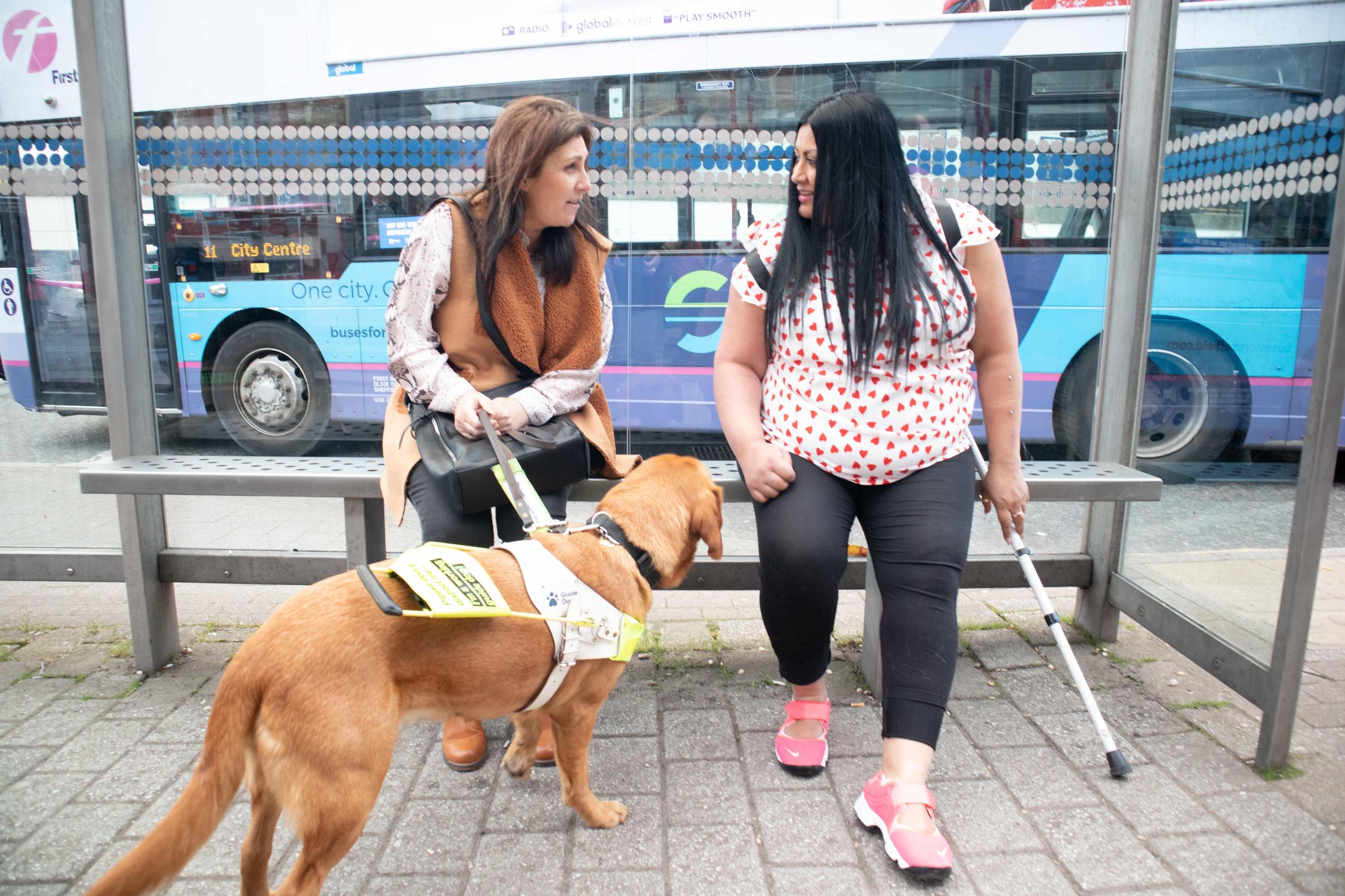

Steps must be urgently taken to improve poorly designed bus stop bypasses are hard to cross for some pedestrians, particularly those who are blind and partially sighted, says a new report from Living Streets.
The study examines good and bad examples of bypasses, where a cycleway runs behind the passenger boarding area at a bus stop.
The UK charity for everyday walking points out there are key design principles and a minimum design quality, often ignored until now, which would make bus stop bypasses easier for many to negotiate.
Living Streets found little evidence that concerns around blind and partially sighted pedestrians’ experiences had shaped design choices. “The onus is on designers to address this lack of confidence around participation, consultation and to achieve a genuine shift to co-production.”
“Conditions at a bus stop vary greatly as the level of cycling, level of pedestrian use, and complexity of the environment change,” states the report. It breaks down bypasses into three types of environment: quiet-simple; moderately-busy-complex; and busy-complex.
“In certain circumstances cycling on a track can reach levels, particularly in complex environments, which make it difficult for a broad range of pedestrians to cross comfortably,” according to the study. “For some, crossing safely and comfortably can become difficult or impossible. This is particularly true for those who walk more slowly, who have impairments to their balance, or who find it harder to judge cyclist speeds.”
Badly laid out bus stop bypasses multiply the issues faced by blind and partially sighted people, the research found. Insufficiently wide pavements or islands create overcrowding or real difficulties manoeuvring with mobility aids like wheelchairs or mobility scooters.
In all cases there must be sufficient space for accessible design, including sufficient footway width (minimum 2m) and a bus stop island/platform, which can be easily negotiated using a wheelchair or other mobility aid, says Living Streets.
At some bypasses a zebra crossing has been installed while others have created layouts designed to slow cycling speeds. “Our observations confirm neither of these approaches work reliably but point to the reasons for this failure being complex and multi-faceted,” says Living Streets. “Indeed, we suggest some design features may be having effects that are the opposite of those desired.”
In some cases an alternative to bus stop bypasses could be to allow cycling and very slow-speed bus traffic to mix while excluding other vehicles. “This might be another option employed in limited places, such as within a city centre.”
Stephen Edwards, Chief Executive, Living Streets said: “There have undoubtedly been problems with some bus stop bypasses – especially when buses and large numbers of people walking, wheeling and cycling have had to share limited space. In such environments, current designs have excluded blind and visually impaired pedestrians.
“If we are to encourage more cycling, cycle tracks must provide consistent protection from vehicular traffic. However, this should not come at the expense of disabled pedestrians. The design of bus stop bypasses has been poor at some locations. We urgently need to consider solutions, establish national standards and include disabled people in the design.”

TransportXtra is part of Landor LINKS
© 2025 TransportXtra | Landor LINKS Ltd | All Rights Reserved
Subscriptions, Magazines & Online Access Enquires
[Frequently Asked Questions]
Email: subs.ltt@landor.co.uk | Tel: +44 (0) 20 7091 7959
Shop & Accounts Enquires
Email: accounts@landor.co.uk | Tel: +44 (0) 20 7091 7855
Advertising Sales & Recruitment Enquires
Email: daniel@landor.co.uk | Tel: +44 (0) 20 7091 7861
Events & Conference Enquires
Email: conferences@landor.co.uk | Tel: +44 (0) 20 7091 7865
Press Releases & Editorial Enquires
Email: info@transportxtra.com | Tel: +44 (0) 20 7091 7875
Privacy Policy | Terms and Conditions | Advertise
Web design london by Brainiac Media 2020